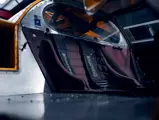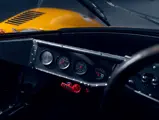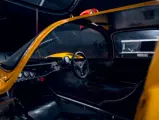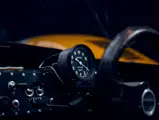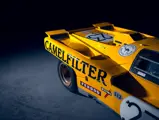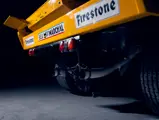
1970 Ferrari 512 M
{{lr.item.text}}
{{bidding.lot.reserveStatusFormatted}}
- One of just 25 Ferrari 512 race cars constructed between 1970 and 1971
- Supplied new to Ecurie Francorchamps in May 1970; the last sports prototype to be raced by the Belgian team
- Upgraded to ‘M’ specifications in 1971, making it just one of 15 in existence
- Two-time 24 Hours of Le Mans entrant, placing 5th overall in the 1970 edition
- The only Ferrari 512 supplied new by Ferrari in Giallo
- Fascinating competition history, racing throughout 1970 and 1971 with drivers including Derek Bell and Alain de Cadenet
- Represents the peak of early 1970s Ferrari sports prototype engineering
- Une des 25 Ferrari 512 de compétition produites en 1970 et 1971
- Livrée neuve en mai 1970 à l'Écurie Francorchamps ; dernier sport-prototype engagé en course par l'équipe belge
- Modifiée en 1971 aux spécifications "M", ce qui en fait une des 15 Ferrari 512 de ce type
- Deux participations aux 24 Heures du Mans, cinquième à l'arrivée de l'édition 1970
- Le seul Ferrari 512 livrée neuve de couleur jaune
- Palmarès fascinant, participation aux saisons 1970 et 1971 avec des pilotes comme Derek Bell et Alain de Cadenet
- Représente le sommet de la technique Ferrari en matière de sport-prototype des années 70
Veuillez noter que cette voiture sera entreposée aux Pays-Bas après la vente, d'où il faudra organiser le transport.
When the Group 6 regulations changed in 1968—suddenly requiring engines to be no greater than 3.0 litres in displacement—Enzo Ferrari decided not to compete. By 1969, the requirements had changed again, and a loophole created, which rival marque Porsche took full advantage of with the advent of the 917. Following Fiat’s partial acquisition of Ferrari, its company founder took the influx of much-needed cash and ploughed it into developing a sports prototype that could compete against the Porsche 917 in the 1970 racing season.
Dubbed the 512 S, only 25 cars were built and powered by a brand new 5.0-litre V-12 engine producing 552 horsepower. Ferrari rushed to meet the homologation requirement of 25 cars, presenting 17 complete cars with eight knock-down kits to the homologation authorities in January 1970, just in time to compete at the 24 Hours of Daytona.
Chassis 1030 was one of the 17 Ferrari 512 S that would compete in the 1970 endurance racing season. It was sold new in the spring of 1970 to the Belgian Ferrari concessionaire and racing team, Ecurie Francorchamps. The bodywork was painted Giallo, the only 512 to receive this colour (save for chassis 1002, which was painted Lemon Yellow).
Making its debut on 17 May 1970, drivers Derek Bell and Hugues de Fierlant qualified in 7th and finished 8th overall at the 1000 Km of Spa. Their next outing was over the 13 and 14 June for the 24 Hours of Le Mans, where Alistair Walker and de Fierlant placed an impressive 5th overall and 4th in the 5.0-litre class.
That autumn, chassis 1030 made its bow on the big screen, deployed by Steve McQueen for the filming of Le Mans. It then headed to South Africa for the 9 Hours of Kyalami, where it finished 6th overall and 3rd in class. For the 1971 season, on 10 January, Gustave Gosselin and de Fierlandt entered the 1000 Km of Buenos Aires. Sporting race number “18”, the Belgian duo finished 6th overall and 4th in class. The pair returned to the Americas over 30 and 31 January to compete in the 24 Hours of Daytona. They qualified in 11th but during the race they were forced to retire on the 124th lap due to oil pressure issues.
Following Daytona, chassis 1030 returned to Belgium, where it became one of the 15 Ferrari 512s to be upgraded to ‘M’ specifications; the ‘M’ standing for modificata. The new engine was reduced in weight, given more efficient cylinder heads, and now produced 610 horsepower. New lower bodywork improved the aerodynamics and was finished again in yellow. Following its upgrade, Ecurie Francorchamps fielded the car in the 1971 24 Hours of Le Mans, with Alain de Cadenet driving with de Fierlant. Qualifying in 10th, with six-hundredths separating them from 6th place, the duo unfortunately suffered from gearbox issues and were forced to retire early.
The next outing on 4 July was far more successful, with de Fierlant claiming outright victory at Zandvoort in the Coupes Benelux. Later that month, de Cadenet and Lothar Motschenbacher raced in the 6 Hours of Watkins Glen, placing 4th overall and 3rd in their class. The following day, de Cadenet finished 18th in the Can-Am race.
This marked the end of chassis 1030’s racing days, and the car was acquired by de Cadenet, who in turn sold to British collector Neil Corner that year, who later sold the car to Lord Anthony Bamford in 1972. Lord Bamford entered the 512 M into the MN GT championship that year, with all seven appearances resulting in 1st-place finishes. Since the 1970s, chassis 1030 has been owned by various renowned collectors across the globe, and was acquired by the consignor in 2018, remaining as part of his private collection.
Today, the car sports its 1971 livery and is still painted in the fabulous Francorchamps yellow. It is accompanied by a report from the marque historian Marcel Massini while the car was certified by Ferrari Classiche in 2005, and is accompanied by its "Red Book". It should be noted that chassis 1030 is widely considered one of the finest examples of the Ferrari 512 M, having never suffered a major collision in period. The vehicle is a wonderful example of preservation.
Quand la règlementation du Groupe 6 a changé, en 1968 — avec une soudaine limitation de cylindrée à 3 litres — Enzo Ferrari a décidé de ne pas participer. En 1969, les règles ont été à nouveau modifiées, ouvrant une faille dans laquelle s'est engouffré Porsche pour créer la 917. A la suite de l'acquisition partielle de Ferrari par Fiat, le constructeur au cheval cabré a profité de cet afflux de trésorerie pour mettre au point un sport-prototype capable de rivaliser avec la Porsche 917 lors de la saison 1970.
Sous l'appellation 512 S, 25 voitures ont vu le jour, équipées d'un tout nouveau V12 de 5 litres développant 552 ch. Ferrari a mis les bouchées doubles pour répondre au règlement exigeant un minimum de 25 exemplaires et a présenté en janvier 1970 aux autorités d'homologation 17 voitures terminées et huit kits complets, juste à temps pour prendre part aux 24 Heures de Daytona.
Cette voiture, châssis 1030, est une des 17 Ferrari 512 S qui ont participé à la saison 1970 d'endurance. Vendue neuve au printemps 1970 à l'Écurie Francorchamps, concessionnaire Ferrari belge et écurie de course, c'est la seule 512 qui ait été livrée avec une carrosserie "Giallo" (à l'exception du châssis 1002, peint en jaune citron).
Lors de sa première course, le 17 mai 1970 aux 1000 Km de Spa, elle s'est qualifiée à la septième place et a terminé huitième au classement général, entre les mains de Derek Bell et Hugues de Fierlant. Un mois plus tard, les 13 et 14 juin aux 24 Heures du Mans, Alistair Walker et de Fierlant ont signé une impressionnante cinquième place, tout en étant quatrièmes de la catégorie 5 litres.
A l'automne, cette voiture (châssis 1030) a fait une apparition sur grand écran en participant au tournage du film Le Mans de Steve McQueen. Elle est ensuite partie en Afrique du Sud pour les 9 Heures de Kyalami où elle a terminé sixième au classement général et troisième de sa catégorie. Pour la saison 1971, Gustave Gosselin et de Fierlant se sont inscrits le 10 janvier aux 1000 Km de Buenos Aires. Portant le numéro 18, ils ont signé la sixième place au classement général et la quatrième de leur catégorie. Les 30 et 31 janvier aux 24 Heures de Daytona, ils se sont qualifiés onzièmes mais ont été contraints à l'abandon au 124ème tour à cause d'un problème de pression d'huile.
Après Daytona, cette voiture est rentrée en Belgique où elle a été la quinzième Ferrari 512 à passer aux spécifications "M", lettre signifiant "modificata". Son nouveau moteur était moins haut, doté d'une culasse plus efficace et développait 610 ch. La carrosserie plus basse, jaune à nouveau, offrait une meilleure aérodynamique. A la suite de ces modifications, l'Écurie Francorchamps a engagé la voiture aux 24 Heures du Mans 1971, avec comme pilotes Alain de Cadenet et Hugues de Fierlant. Après un dixième temps aux essais, à six centièmes seulement du sixième chrono, l'équipage a malheureusement souffert en début de course de problèmes de boîte de vitesse qui les ont forcés à abandonner.
La sortie suivante, le 4 juillet à Zandvoort pour les Coupes Benelux, s'est montrée plus fructueuse avec la victoire pour de Fierlant. Plus tard dans le mois, de Cadenet et Lothar Motschenbacher ont participé aux 6 Hures de Watkins Glen, terminant quatrièmes et troisièmes de leur catégorie. Le lendemain, de Cadenet arrivait 18ème à la course Can-Am.
Ces courses ont marqué la fin de la carrière de cette Ferrari 512 n°1030, achetée ensuite par Alain de Cadenet, puis vendue dans l'année au collectionneur britannique Neil Corner qui l'a à son tour cédée en 1972 à Lord Anthony Bamford. Celui-ci a engagé cette 512 M au Championnat MN GT de cette même année, participant à sept manches et obtenant plusieurs victoires. Depuis les années 70, cette voiture a appartenu à plusieurs collectionneurs internationaux de renom, avant d'être achetée en 2018 par l'actuel propriétaire qui l'a intégrée à sa collection privée.
Aujourd'hui, elle porte sa livrée de 1971 dans le fabuleux jaune de l'Écurie Francorchamps. Elle est accompagnée d'un rapport de l'historien de la marque Marcel Massini et du "Red Book" de la certification Ferrari Classiche qu'elle a obtenue en 2005. Il convient de souligner que cette voiture portant le n°1030 est largement considérée comme une des meilleures 512 M : n'ayant pas subi d'accident majeur à son époque, elle est magnifiquement préservée.





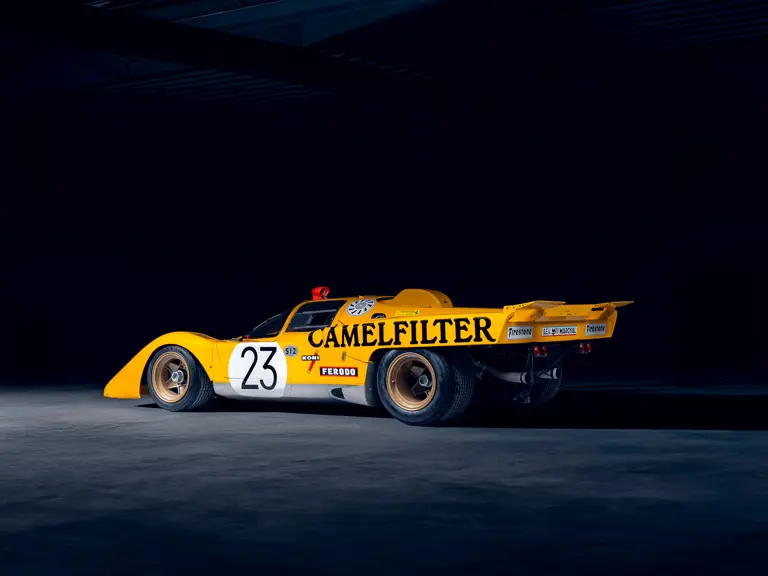













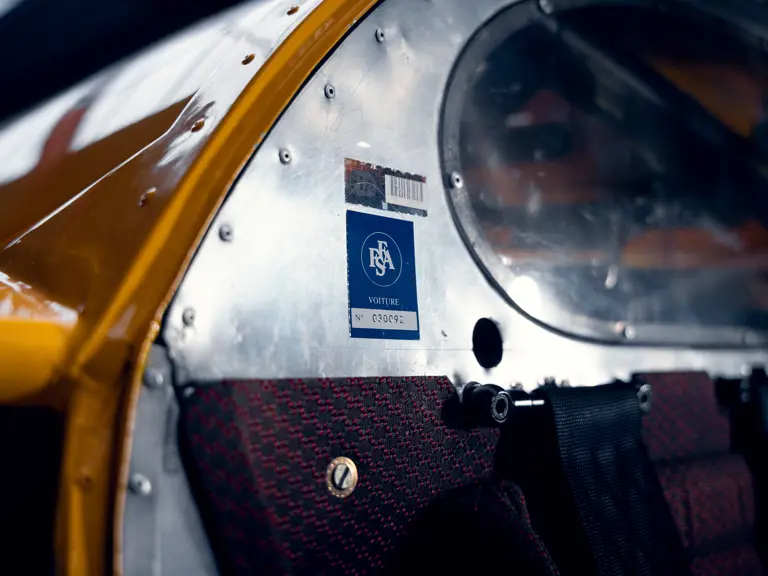

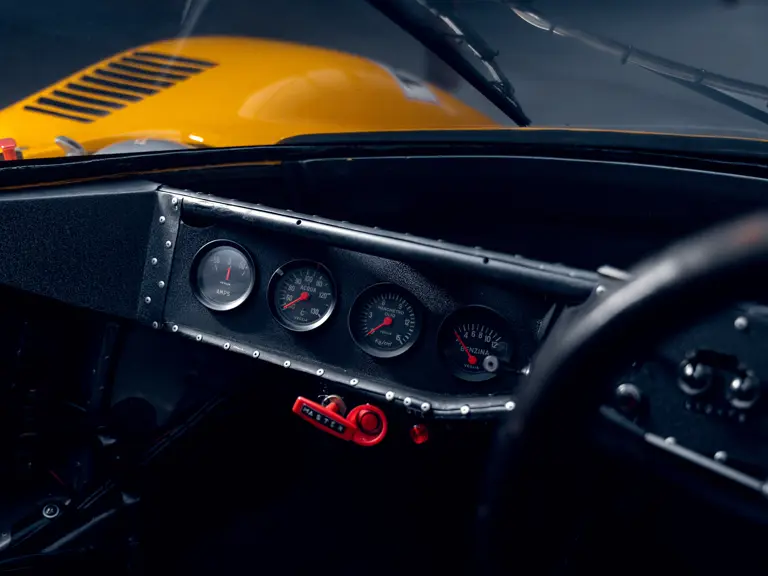








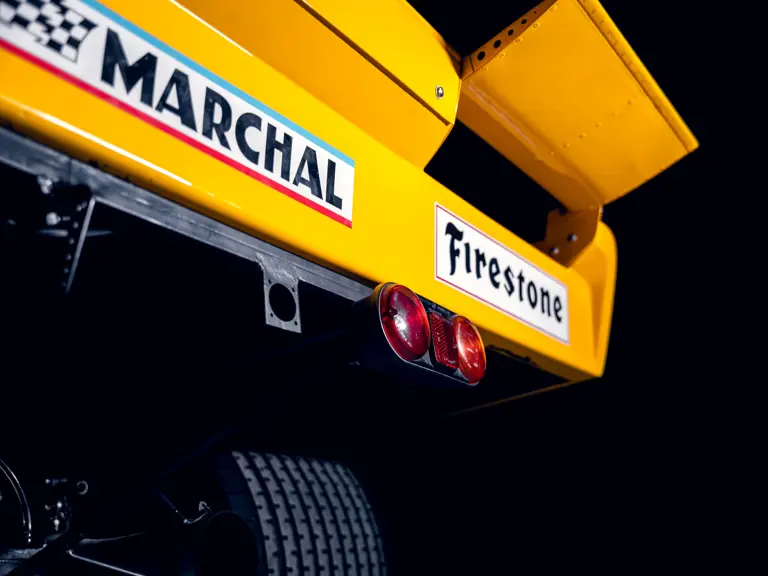






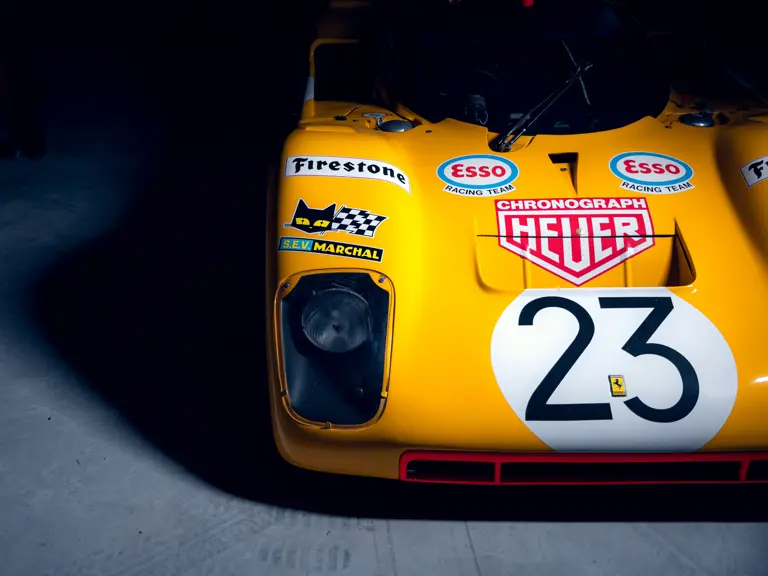


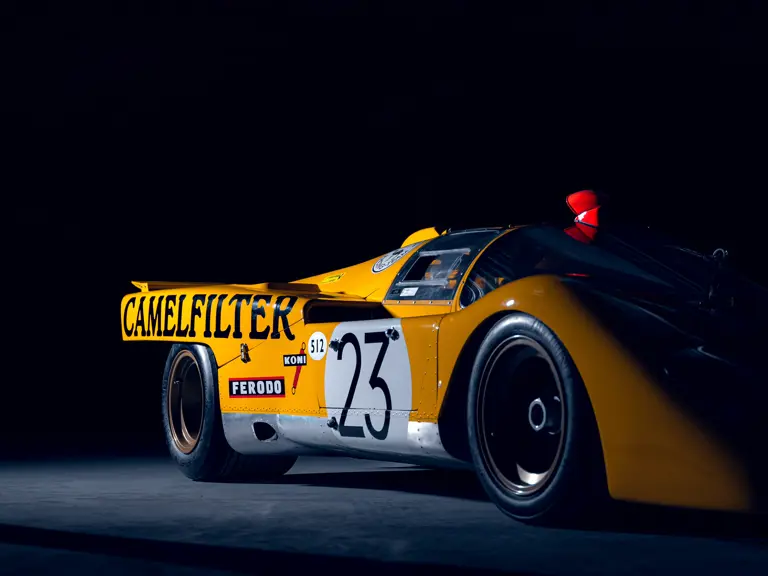



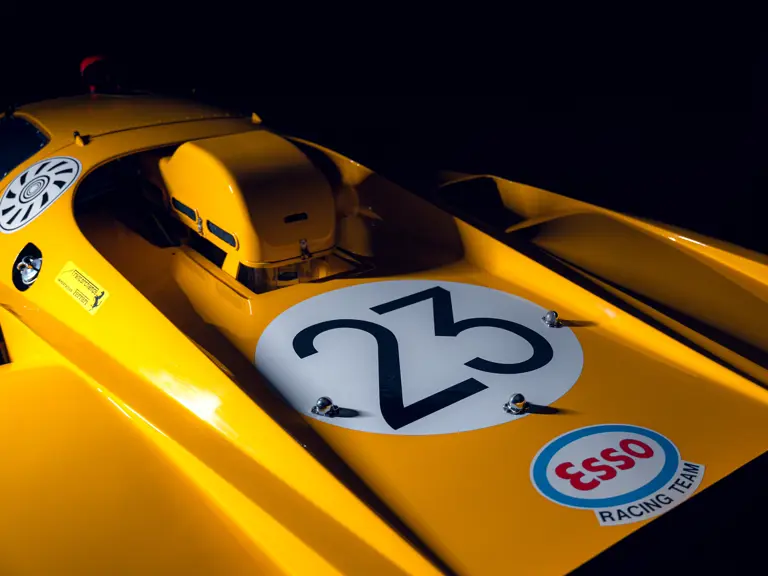
















 | Paris, France
| Paris, France













